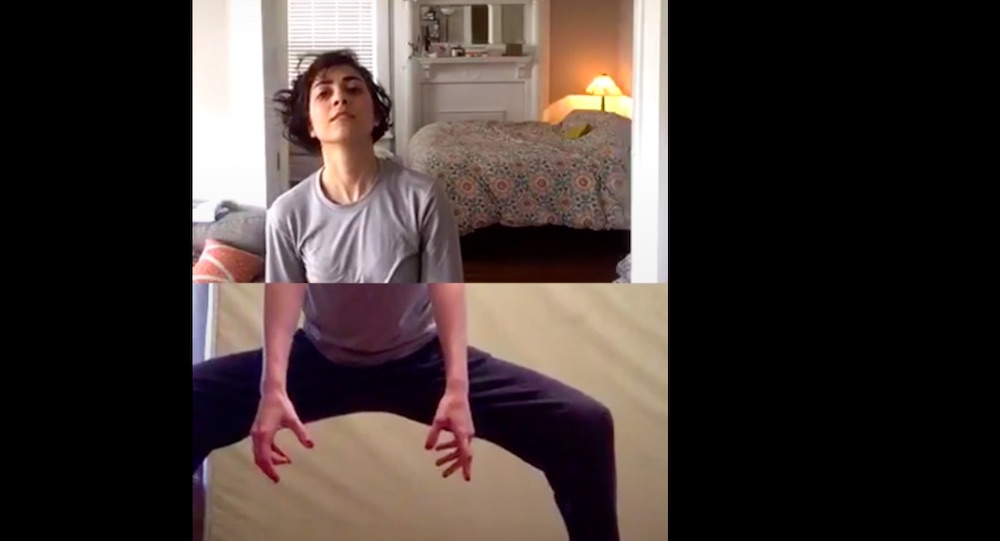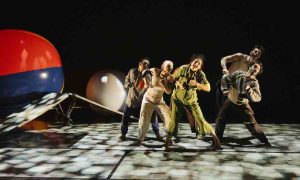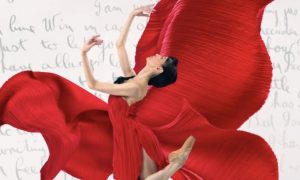Dance Informa sat down with Iran-born and U.S.-based dancer Bita Bell (PhD). A teacher at Gibney in NYC and sought-after artist both in the U.S. and Europe, Bell used her time in quarantine to re-imagine what connection can look like in the age of social distancing.
What is Duet While Solo?
“It’s an online performance created during the COVID-19 pandemic and the consequential self-isolation. I perform on Instagram live, alongside dancer friends who are quarantined elsewhere. We start by checking in with one another and seeing how we’re doing, and then based on our mood, we make a 20- to 30-minute improvisation score. I go live on my Instagram, add my partner to the online session, and we perform. I didn’t want to enforce productivity pressure. I want it to be about ‘what do you need to make you feel alright?'”
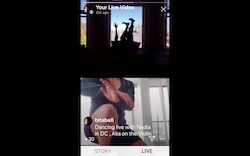
There’s been a lot of talk about the pressure to keep up with online classes, when maybe that’s not what we need physically or emotionally. This seems like a good solution, a way to take stock.
“That’s one of the reasons I wanted to connect with other dancers this way. In my first two weeks of self-isolation, I was feeling depressed. My dream gig got cancelled. I was meant to choreograph the North American tour for the band, Pussy Riot. I had danced with them at Nova Rock Festival (a giant rock festival in Europe) and in the European Pride Parade in Vienna. We really clicked, and they hired me to choreograph and dance their entire North American tour. Then the excitement of being on tour was taken away, and so was the financial stability I was about to achieve.
I felt anxious and depressed. I read online about how we’re all, on a global level, experiencing collective trauma. And that was when I got up. I realized that this is weighted, and if I give in to it, it’s going to eat me up. I have traumas from my childhood, and I know how it feels to store them up in the body, and I wanted to prevent this situation from becoming another traumatic moment. I needed to move.
It was difficult; I didn’t feel motivated. I realized that my purpose for moving a lot of the time was based on performing or teaching later. Moving always had another goal. I had to strip that away. Moving can just be about feeling alright, healthy, whole.”
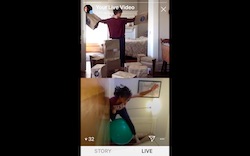
Who are you partnering with?
“Duet While Solo has included dancers from all across the U.S., quarantined in New York, Boston, D.C., Alabama, Mississippi, and Argentina and Austria as well. I’ve partnered with Patricia Mullaney, dance artist and cultural researcher based in Brooklyn, New York. Katherine Moore, assistant teaching professor of dance in University of Southern Mississippi, and Dr. Fenella Kennedy, assistant professor of dance in University of Alabama, both of whom were colleagues, collaborators and close friends of mine during my MFA in dance degree at The Ohio State University. My duet with Yasmin Frione, ex Ballet Junior de Genève, quarantined in her hometown Buenos Aires, Argentine, involved collecting texts in our respective mother tongues Farsi and Spanish and reading them out loud as part of our performance. Most recently, I performed with Jen Passios, artist with CoGRAVITY and Boston Dance Theater alum, and Nadia Khayrallah, dance major graduate of Barnard College, who was quarantined with Alia Scheirman, who played live violin for us!”
How does not being able to touch or feel your partner in the space beside you change how you interact with them?
“Not being able to touch is sad. It’s important in improvisation, and not just contact improv. You know when you close your eyes and you can hear a person, or feel their weight move? You can’t feel that through a flat screen. At the same time, the screen in your space can feel like that person in your space in a new way.”
It’s like an anchor.
“Yeah! When my partner is moving farther back from the screen into their space, it gives my space a new depth. Like an illusion of another door to another house.”
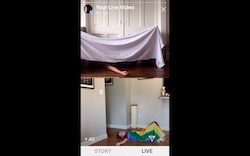
How do you keep it from becoming two separate solos?
“Sometimes, it does feel like two separate solos. It takes a few minutes to get into our own body, especially if we haven’t been moving all day. It starts with a little bit of independence from each other. The attention switches back and forth a lot. Sometimes, something my partner does inspires me, and I go off from that. And then there are moments when we’re in the zone together. But there’s no intention to always be synced up. I just want to hold space for both of us to move, even if the improvisation is in contrast.”
It’s like it’s always a duet no matter what. You’re on a split screen, so whether you’re moving together or in contrast, you’re still occupying the same space.
“Yeah. I think as a viewer it feels more consistently like a duet. They notice connection and composition on the screen. When you’re doing it, you’re not always aware of that interplay. It’s a fun challenge for attention and awareness.”
Has this project helped you feel more connected during social distancing?
“It helped me to get out of the no-movement, in shock stillness. It re-energizes moving for the sake of moving. And it helps to feel like I’m not alone. Today marks the longest time I’ve lived alone. It’s provided me with time to work on self-esteem and self-love. I’m realizing some of my extrovert behaviors were ways to not pay attention to myself.
Every dancer knows a lot about their body from years of classes and training. I would encourage dancers to create a practice or ritual of movement to explore the things they’ve learned. Dig into your tool boxes.”
Follow Bita Bell, and catch a Duet While Solo: @bitabell.
By Holly LaRoche of Dance Informa.


